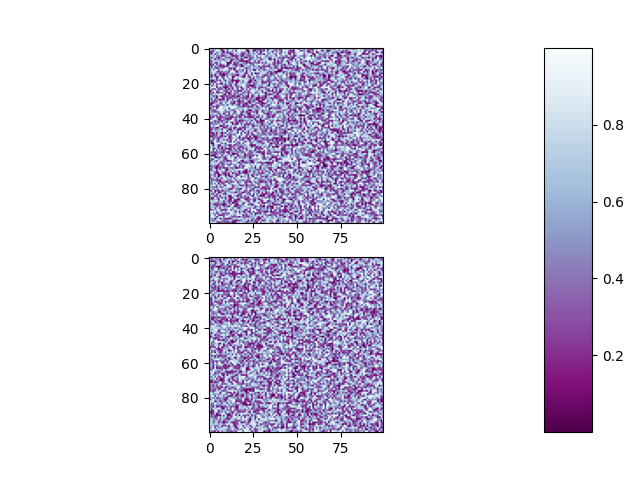

I’ve never had the chance to formally study data visualization, but I’ve probably written over two thousand scripts creating data visuals at this point (automating client reports was my first big task at SBI). Most of this post is based on my observations and experience.

In this post I want to write a little bit about what I see as the better way to approach data visualization with the matplotlib library, and also discuss how it helped me understand object-oriented programming.

#MATPLOTLIB SUBPLOT SPACING FULL#
# suptitle function adds a centered title to the full canvas.įig.suptitle('Soda consumption 2018-2019', fontsize=18)Īxes.set_title("Quarter 1 consumption")Īxes.set_title("Quarter 2 consumption")Īxes.set_title("Quarter 3 consumption")Īxes.Creating figures for client trading reports was one the first things I had to do in Python, and probably what first got me excited about data science more broadly. #fig and axes are the two variables given to the x and y coordinates.įig, axes = plt.subplots(2, 2, figsize=(8, 6), sharex=True, sharey=True) #nrows, ncols : int, optional, default: 1, Number of rows/columns of the subplot grid. #sharex and sharey stops the axes to display reduntant information # Introducing subplots to distribute data over 4 quarters For example, you can create a scatter plot on subplots too with your own defined data: import matplotlib.pyplot as pltĭrinks = You can have your own data for x and y coordinates and create as many plots as you want. We have used the matrix position of the subplots (rows and columns) and plotted values of variables x and y to plot normal and inverted plot. We have added titles too to make sure that the difference shows. You can pre-set the x and y values by storing data in them. Let’s populate 2 subplots by using axes (rows and column position) and plot values of x and y coordinates. Finally we use the plt.show() function to show the output.

We then use another function known as plt.tight_layout() which prevents subplots to overlap each other and keeps the mega plot uniform. In the above figure, we imported the matplotlib.pyplotlibrary and created two variables fig (for the figures) and axes (rows and column wise to populate with data) and set them equal to plt.subplots(nrows=2, ncols=2) as defined per our matrix. Subplots can be created by defining rows and columns, Let’s create 4 (2×2) a matrix empty subplots for our understanding before we populate it with data: import matplotlib.pyplot as pltįig, axes= plt.subplots(nrows=2, ncols=2) There is no limit to having subplots, you can create as many subplots as you want. Or in other words, you can classify in one plot. However, there might be times where you want to create subplot in matplotlib within one big giant plot. You can add data to get a figure along with axes, colors, graph plot etc. The subplot function takes in two main arguments as rows and columns which we use for defining the number of rows and columns of the subplots because the subplots works as the same as a matrix. We have an inbuilt pyplot function that is used for creating multiple plots on a canvas known as subplots(). As we have covered so far, matplotlib is all about creating figures. In this tutorial, we are going to learn about subplot in matplotlib.


 0 kommentar(er)
0 kommentar(er)
